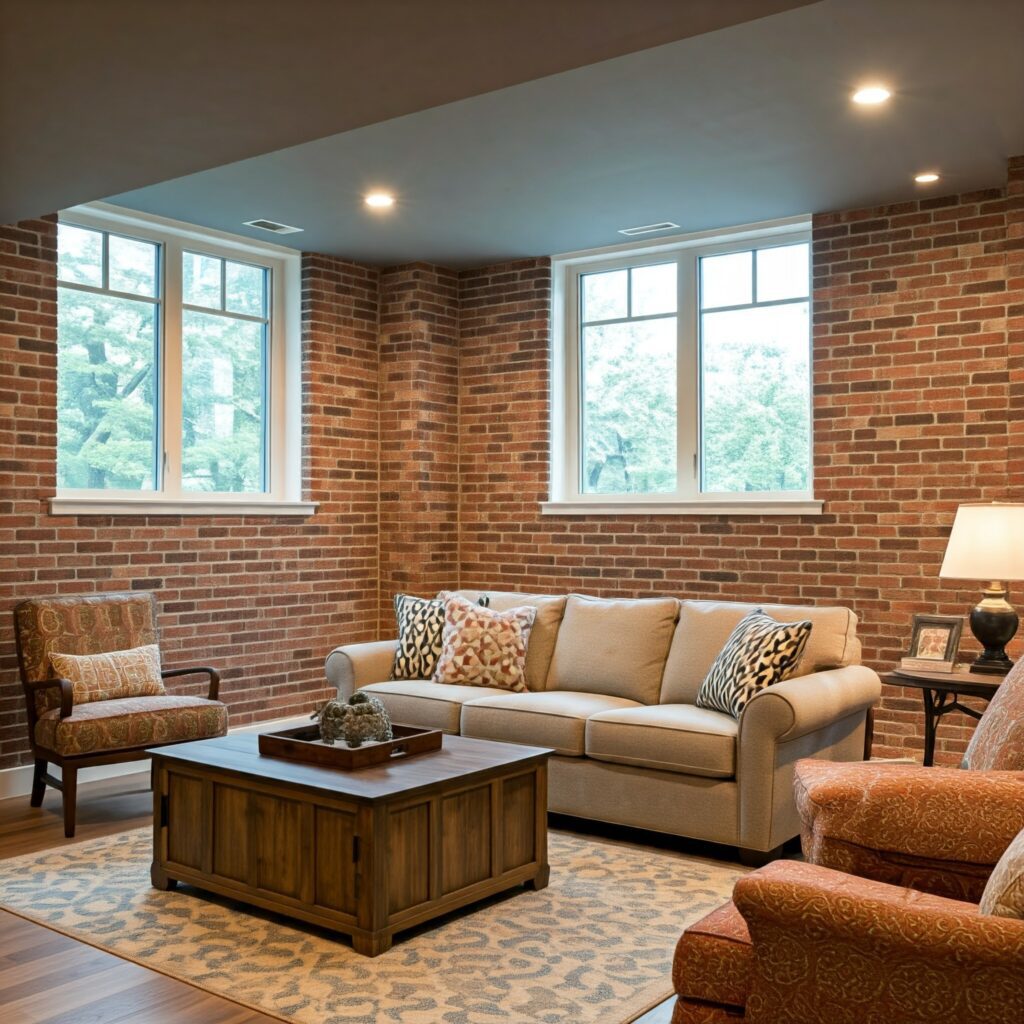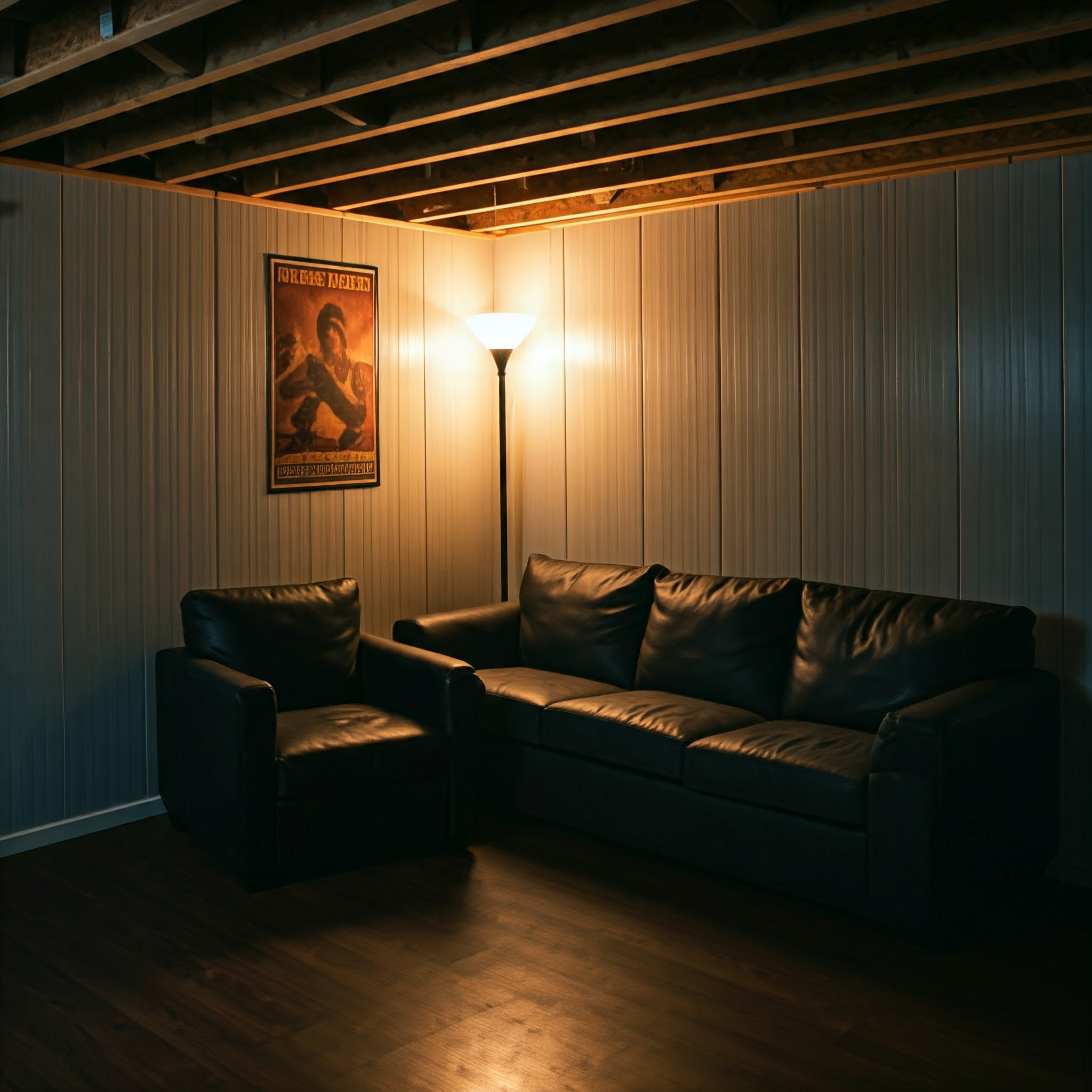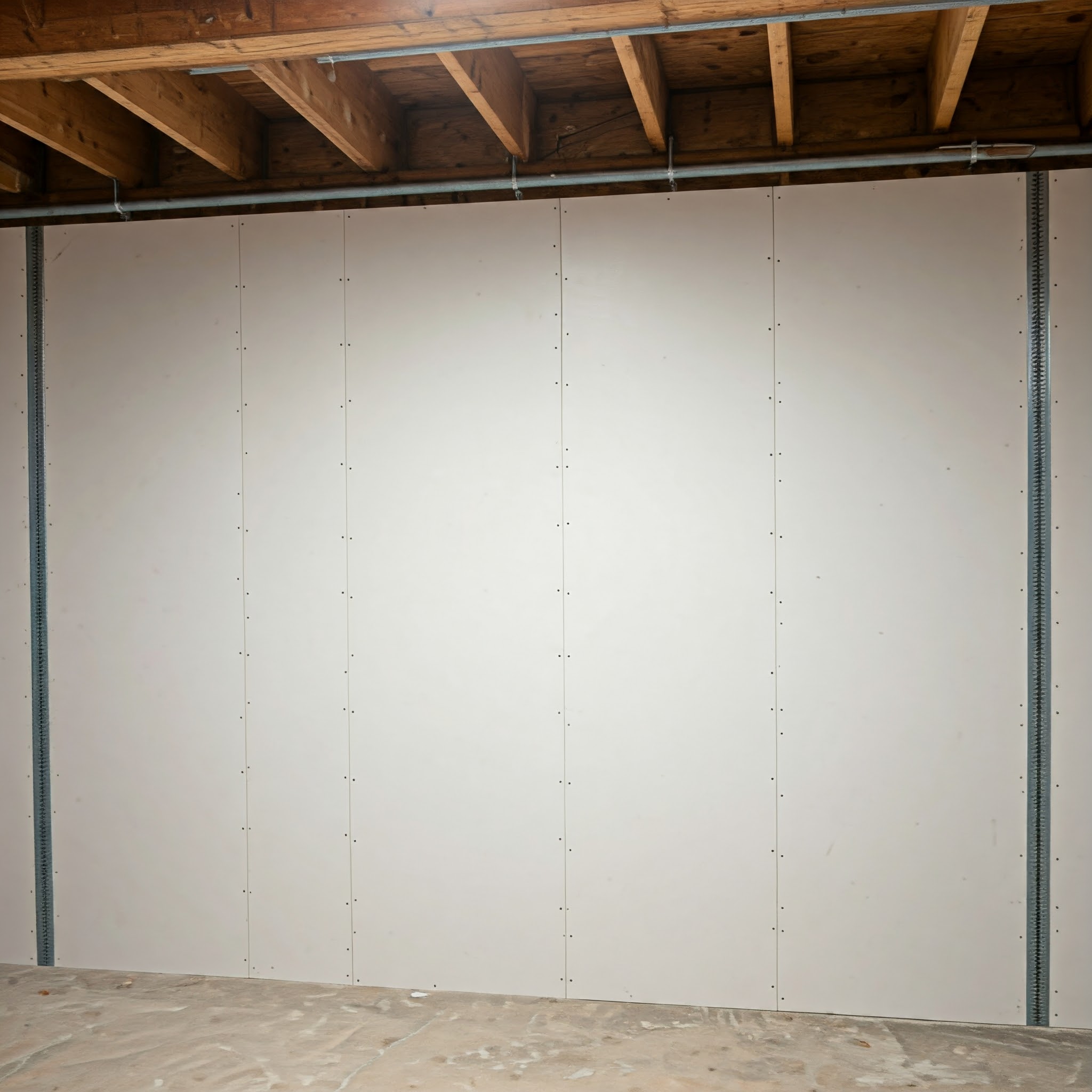Basement Wall Panels

Basement Walls:
To make your basement feel warm and inviting, try coloring up the walls with a pop of color, aesthetic lighting, or some interesting textures on walls. It’s easier than you might think and it can really transform the space into a cozy hangout spot.
Basement wall Paneling:
Installing Basement wall panels provides you with waterproof wall framing and insulation in a single step.
Turning an unfinished basement into a cozy living area is a fantastic way for families to add extra space. But keep in mind that basements have different needs compared to the rest of the house. The higher moisture levels downstairs means you’ll need to use materials specifically suited for basements. Using standard “above-grade” materials could lead to some serious issues over time.
Don’t build new basement walls with wood studs and fiberglass insulation:
Avoid building new basement walls with wood studs and fiberglass insulation! While these materials work fine upstairs, they’re not the best choice for basements due to their tendency to absorb moisture. With higher humidity levels or occasional water on the basement floor, wood can soak up moisture and become a breeding ground for mold and wood rot, which not only damages the materials but also brings unpleasant smells and potential health risks.
Fluffy fiberglass! It doesn’t do much better it tends to clump up when wet, falls apart, and loses its insulation power completely. A better option for your space is using basement wall panels, which are designed to handle the unique conditions of basement environments, helping to keep your basement cozy and dry.
Moisture-proof materials to use:
Moisture-proof materials to the rescue! Instead of relying on wood, fiberglass, or other organic materials that just don’t hold up in basements, consider basement wall panels that are specifically designed for these spaces. These basement wall panels are resistant to rot, mold, and moisture damage, so even if your basement floods, you won’t have to worry about them failing on you. It’s all about choosing the right materials to keep your basement cozy and trouble-free! Let’s discuss the solution now!
What to use then?
When you’re picking out materials for basement wall panels, it’s important to think about durability and how well they handle moisture since basements are prone to dampness and even the occasional flood. Here are some of the top choices that homeowners love, based on customer reviews and what works best in American homes:
Trusscore Wall & CeilingBoard: This one’s a crowd favorite because it’s made from a tough PVC material that’s built to resist mold and moisture. It’s super easy to install and keeps your basement looking bright and clean. No need for all the fuss with mudding or painting, just snap it in place and you’re good to go. It’s great if you want a low-maintenance solution that still looks sharp.

Mold-Resistant Drywall (like Green Board): If you’re going for that classic finished wall look, mold-resistant drywall can be a solid option. It handles the typical basement moisture better than regular drywall, though it’s not completely waterproof. It’s a good middle-ground if you want something familiar that still offers some protection.

Vinyl Panels: These are great for basements because they’re tough, waterproof, and easy to clean. Whether your basement is a busy hangout spot or a quiet retreat, these panels can take a beating and still look good. Plus, they help keep the mold at bay, which is a big plus!

Foam Insulated Panels: If you’re worried about keeping your basement cozy, foam insulated panels offer good warmth along with moisture resistance. They’re easy to work with and can be customized to fit your style, making them a versatile pick.
Choosing the right basement wall panels can make all the difference in creating a space that’s not only cozy but also durable. These materials are popular for a reason they stand up to the test and keep your basement looking fresh and inviting!

So What is the Most Cost Effective Option?
Among the options discussed above, Trusscore Wall & Ceiling Board and Vinyl Panels tend to be more budget friendly compared to others, especially when factoring in installation and long-term maintenance costs.
However, Vinyl Panels often come out as the cheapest option overall. They are easy to install, require minimal tools, and have a lower initial cost compared to other materials. Plus, since they are highly durable and resistant to moisture and mold, they save you money on potential repairs or replacements down the road.
On the other hand, while Trusscore Wall & Ceiling Board is also affordable, it might be slightly more expensive than basic vinyl options due to its higher quality finish and added features like built-in durability and ease of maintenance.
If budget is the primary concern, vinyl panels are typically the go-to choice, offering a balance of cost effectiveness and durability for basement wall panels specially for the weather of America.

Different styles for your Basement wall panels:
Stone or Brick 3D
If you’re looking to elevate your basement’s look without breaking the bank, stone or brick 3D wall paneling could be the solution. These panels add a warm, inviting feel to your space and are surprisingly budget-friendly. Imagine giving your basement a cozy, cabin-like vibe by placing these panels halfway up the walls, or creating a stunning feature wall or fireplace surround with them.
While stone is generally more affordable, brick tends to make a bold statement. Fortunately, you don’t need to cover an entire wall to make an impact, just a section can make a big difference.
Most of these panels are designed to be glued on easily. You’ll need to measure and cut them carefully to ensure a seamless fit, but the end result will be truly impressive.

Rigid Foam Sheets
If you’re looking for an affordable and effective option for your basement, rigid foam sheets could be a great choice. Made from expanded polystyrene foam, these basement wall panels offer a solid barrier against water leaks and moisture, making them a popular pick for keeping your basement dry and comfortable. They can also help with energy efficiency by regulating temperature and reducing energy consumption.
Just make sure to install them without any gaps or holes; if they’re not air-tight, they won’t be as effective since air and moisture could seep through. Additionally, keep in mind that these panels are sensitive to sunlight, so they might not be the best fit for a walk-out basement where exposure to the sun is a concern.

Decorative Panels
If you’re looking to add some personality and style to your basement, decorative wall panels are a fantastic option. With a variety of materials to choose from, you can really let your creativity shine. Whether you go for laminate, PVC sheets, prefabricated boards, or gypsum boards, each of these basement wall panels offers its own set of benefits.
These materials are particularly well-suited for basements because they’re waterproof, making them a practical choice for areas prone to moisture. Plus, you have the flexibility to customize the design to fit your vision, so you can create a space that’s both functional and visually appealing.

Board and Batten
If you’re aiming for a sleek, modern look in your basement, flat panels might be just what you need. These basement wall panels offer a minimalist design with a clean, streamlined appearance, making them perfect for contemporary spaces. Plus, they’re the most budget-friendly option, providing a stylish solution without breaking the bank. If you appreciate a more understated, elegant look, flat panels are an excellent choice for keeping your basement both stylish and affordable.

Drywall
Drywall panels are a popular go-to for finishing basements, and it’s easy to see why. They’re cost-effective, simple to install, and naturally fire-resistant. For the best results, make sure to use high-quality drywall tape to protect against mold, moisture, and to improve sound and fireproofing. Opting for purple or green boards can offer extra protection. While you can add paint to help guard against moisture, keep in mind that drywall isn’t completely waterproof. Overall, drywall basement wall panels provide a solid and budget-friendly foundation for your basement’s finish.

Wahoo Walls
Wahoo Walls are a fantastic option for quick and easy basement wall paneling. The installation process is a breeze, thanks to the aluminum tracks that eliminate the need for studs or drywall. These panels are made from inorganic materials, so they’re naturally resistant to mold, which is a big plus for basements. Plus, they come pre-insulated, adding an extra layer of convenience and efficiency. If you’re looking for a hassle-free way to upgrade your basement, Wahoo Walls might be just what you need.

Medium Density Fiberboard (MDF)
Medium Density Fiberboard (MDF) is a great choice for basement wall panels. It’s similar to tile board but made from compressed wood fibers instead of ceramic, resulting in a dense, flat panel. MDF is eco-friendly, affordable, and durable, making it a solid option for finishing your basement.
However, MDF can be sensitive to moisture. If it gets wet, it can swell and become damaged. To avoid this, it’s important to apply a moisture-resistant coating, like melamine, before installation. With the right precautions, MDF basement wall panels can be both a stylish and practical addition to your space.

Plastic Wall Panels
Plastic wall panels are an excellent choice for basements in humid or moist climates. They’re designed with systems that channel water into a concealed trough behind the wall, helping to prevent leaks through cracks and stopping any existing cracks from worsening. This makes them a practical and cost-effective option for your basement.
However, be mindful that unfinished basement walls are porous and can absorb water. If the panels are sealed too tightly, moisture trapped behind them can lead to rot and foundation issues. To avoid this, it’s important to use the right vapor barriers. Depending on your local climate, you might need a specific type of vapor barrier; cold climates often require one, while hot or dry areas might not. With proper installation and moisture management, plastic basement wall panels can be a durable and efficient solution for your space.

Conclusion
In the realm of affordable basement wall panels, wood and traditional drywall are often the least expensive options. However, if you dig a bit deeper, you’ll find that traditional drywall panels are generally a better choice for resisting moisture compared to wood, which can rot over time. Ultimately, the style and function of your finished basement will guide your design decisions.
FAQ
What is the best material to put on basement walls?
Drywall is the most common and best material for finished basement walls, while moisture-resistant options like cement board or foam insulation panels are great for preventing dampness.
How much does a Wahoo wall cost?
Wahoo walls cost around $500 for five panels that are 20 linear feet long.
What are Wahoo walls made of?
Wahoo Walls are made of non-organic materials that are unharmed by water and do not support the growth of mold. Made of JetBoard brand Magnesium Oxide adhered to an Integrity EPS by Atlas R-13 panel that is rated R-15/16 when used continuously without studs.
What is the best board for basement walls?
The best board for basement walls is moisture-resistant drywall, also known as “green board,” because it’s designed to withstand damp environments while providing a smooth, finished look.
What is the best wall finish for basement?
The best wall finish for a basement is moisture-resistant paint or wall panels like vinyl or fiberglass, as they help prevent mold and resist moisture while providing a clean, polished look.
